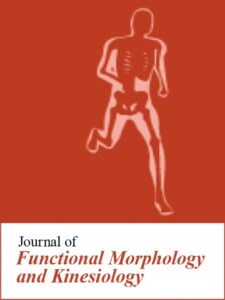Publications

Correlations Between Achilles Tendon Stiffness and Jumping Performance: A Comparative Study of Soccer and Basketball Athletes
Authors: Daniel Schmidt 1, Lukas Verderber 1, Andresa M. C. Germano 1, Nico Nitzsche 2
Affiliations:
- Motor Control, Cognition, and Neurophysiology, Chemnitz University of Technology, Thueringer Weg 11, 09126 Chemnitz, Germany
- Professorship of Sports Medicine and Exercise Therapy, Chemnitz University of Technology, Thueringer Weg 11, 09126 Chemnitz, Germany
Journal: Journal of Functional Morphology and Kinesiology - March 2025, Volume 10, Issue 2, Article no. 112 (DOI: 10.3390/jfmk10020112)
-
Field & Applications:
- Sport
- Muscle development / Performance
Background/Objectives: Human tendon properties influence athletic performance, and it was shown that Achilles tendon (AT) stiffness correlates with an athlete’s jumping performance across sports. However, the findings on this relationship between basketball and soccer are different. Hence, this study examined the relationship between AT stiffness and jumping performance in male athletes.
Methods: Sixty-six males (24.9 ± 4.7 years; twenty-two basketball players (22.0 ± 4.1 years), and forty-four soccer players (26.3 ± 4.4 years)) participated. Reactive jumping performance (reactive strength index (RSI), jump height (JH), and ground contact time (GCT)) were assessed using drop jumps (fall height: 30 cm), and AT stiffness (supine position) was measured using the MyotonPRO.
Results: Soccer players had a significantly higher AT stiffness (826.8 ± 90.5 N/m) than basketball players (754.1 ± 80.1 N/m, p = 0.002), but no differences were found in JH, RSI, or GCT (p > 0.05). JH and AT stiffness significantly correlated in basketball players (r = 0.448) but not in soccer players (r < 0.100). The multiple linear regression indicated that AT stiffness is significantly influenced by the sport type (soccer or basketball), while age, mass, and height remained non-significant.
Conclusions: Despite higher AT stiffness in soccer players (which can be explained by different activity regimens), a moderate correlation between jumping performance and AT stiffness was evident only in basketball. Given the versatile demands of both sports, tendon characteristics appear to have an influence on jumping performance. For future studies, investigating tendon characteristics represents a valuable addition to training and therapy scheduling.

Figure 1. (A) Illustration of the measurements using the MyotonPRO device. (B) The Achilles tendon constituted the test location, 5 cm cranial from the calcaneal tuberosity.
Keywords: Achilles tendon stiffness, drop jump, basketball, soccer, correlation
To conclude, this study aimed to quantify AT stiffness and drop-jump-related parameters (jump height, ground contact time, and RSI) in soccer and basketball players and to investigate their relationships and sport-type-related differences. We generally hypothesized varying relationships. We found that soccer players showed significantly greater AT stiffness compared to basketball players. A significant correlation between jump height and AT stiffness was found in basketball players but not in soccer players, supporting our hypothesis and the literature. Multiple regression analysis revealed that AT stiffness is significantly influenced by the type of sport. The reasons for the differing relationships between AT stiffness and jump parameters in soccer and basketball, as well as tendon and stiffness differences between both sports, remain mostly speculative based on the data we collected.


